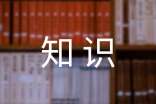- 相关推荐
2017中考英语知识点总结
初三同学距离中考的日子也一天天临近。在这争分夺秒之际,我们为大家梳理了中考英语中的易错知识点,这些看似简单、实际上有迷惑性的考点,大家务必了然于心。

[第一类] 名词类
No.1
[误] What are the woman teachers doing?
[正] What are the women teachers doing?
[析] 当一名词作定语修饰另一名词(单或复数形式)时,作定语的名词要用其单数形式;但当man, woman作定语修饰可数名词复数形式时,要用其复数形式men, women.
No.2
[误] How many peoples are there in the room?
[正] How many people are there in the room?
[析] people表示“人们”时,本身就是复数形式,加s就表示“民族”了。
No.3
[误] I want to buy two bottle of milk for my son.
[正] I want to buy two bottles of milk for my son.
[析] 表示不可数名词的数量时,常用“a/an或数词+表量的可数名词+of+不可数名词”这一结构,其中当数词大于1时,表量的可数名词用其复数形式。
[第二类] 代词类
No.1
[误] This is hers ticket. It’s not my.
[正] This is her ticket. It’s not mine.
[析] 物主代词有形容词性物主代词和名词性物主代词之分。形容词性物主代词之后一定要接名词,而名词性物主代词之后不接任何词。
No.2
[误] Miss Wu teaches our English.
[正] Miss Wu teaches us English.
[析] teach sb. sth.中的sb.作teach的宾语,因此当sb.为人称代词时要用其宾格形式。
[第三类] 介词类
No.1
[误] Can you find the answer of this question?
[正] Can you find the answer to this question?
[析] 英语中用“the answer to…”表示“……的答案”。类似结构还有the key to the door、the way to the zoo.
No.2
[误] Mr. Green will come here in Sunday evening.
[正] Mr. Green will come here on Sunday evening.
[析] 在上午、下午等时,介词要用in;而在具体的某天上午、下午时,介词要用on.
[第四类] 副词类
[误] Lily,why don’t you go to home?
[正] Lily,why don’t you go home?
[析] come,go等后接here,there,home等地点副词时,地点副词前不加to。
[第五类] 连词类
[误] I like Chinese and English, but I don’t like P.E. and history.
[正] I like Chinese and English, but I don’t like P.E. or history.
[析] 肯定句中并列成分间用and连接;而在否定句中,并列成分之间的连接需用or。
[第六类] 冠词类
[误] It takes Smiths a hour to go to Beijing by a plane.
[正] It takes the Smiths an hour to go to Beijing by plane.
[析]
1)表示“……一家人”用结构“the+姓氏复数”;
2)hour第一个字母不发音,它是以元音音素开头的,所以“一小时”要用an hour;
3)用介词by表示“乘坐”某种交通工具时,交通工具名词前不加任何冠词。
[第七类] 句法类
No.1
[误] ―Aren’t you a student? ―No, I am.
[正] ―Aren’t you a student? ―Yes, I am.
[析] 对否定疑问句的回答是用Yes还是用No,这取决于实际情况:如果事实是肯定的,就用Yes表“不”;如果事实是否定的,就用No表“是的”。建议考生将其换成一般疑问句作答。
No.2
[误] Because he was ill yesterday, so he didn’t go to work.
[正] Because he was ill yesterday, he didn’t go to work.
[正] He was ill yesterday, so he didn’t go to work.
[析] 用though, but表示“虽然……,但是……”或用because, so 表示“因为……,所以……”时,though和but 及because和so 都只能择一而用,不能两者同时使用。
No.3
[误] The Smiths have moved Beijing.
[正] The Smiths have moved to Beijing.
[析] 不及物动词后接名词或代词作宾语时,要在动词之后加上介词;但不及物动词后接home, here, there等副词作宾语时,动词之后不必加任何介词。
No.4
[误] The box is too heavy for him to carry it.
[正] The box is too heavy for him to carry.
[析] the box既是这句话的主语, 也是不定式to carry的逻辑宾语,若句末再加上it,就和the box重复了。
No.5
[误] Each of the boys have a pen.
[正] Each of the boys has a pen.
[析] 复数名词前有表个体的each of,one of,every,either of等词组修饰,或有表否定的neither of,none of等词组修饰时,谓语动词要用单数形式。
No.6
[误] Neither he nor you is good at English.
[正] Neither he nor you are good at English.
[析] either... or..., neither... nor..., not only..., but also...等词组连接句子的两个主语时,谓语动词遵循“就近原则”,即由靠近谓语的那个主语决定谓语的形式。
No.7
[误] Ten minus three are seven.
[正] Ten minus three is seven.
[析] 用英语表示加(plus)、减(minus)等数学运算时,谓语动词也用单数形式。
No.8
[误] The number of the workers in this factory are about 5,000.
[正] The number of the workers in this factory is about 5,000.
[析] the number of表示“……的数量”,谓语动词用单数形式;a number of的意思是“若干”或“许多”,和复数名词连用,谓语动词用复数形式。
No.9
[误] Hello! I have important something to tell you.
[正] Hello! I have something important to tell you.
[析] 形容词修饰不定代词作定语时,修饰成分要置于不定代词之后。
No.10
[误] His son is enough old to go to school.
[正] His son is old enough to go to school.
[析] enough作形容词修饰名词时,放在名词前;作副词修饰形容词或副词时,只能放在形容词或副词之后。
No.11
[误] Here is your sweater, put away it.
[正] Here is your sweater, put it away.
[析] put away, pick up, put on等“动词+副词”构成的词组后接代词作宾语时,代词只能放在动词和副词之间。
No.12
[误] Look! Here the bus comes.
[正] Look! Here comes the bus.
[析] 在以here, there引起的陈述句中,若句子的主语是名词,要用倒装语序,即用“Here /There+动词+名词”结构;但主语若是代词时,则不用倒装语序, 即用“Here/There +代词+动词”结构。
No.13
I do well in playing football, _______. (我妹妹也行。)
A. so my sister does(×)
B. so does my sister(√)
-- Li Lei is really a football fan. -- _______. (确实这样。)
A. So is he(×)
B. So he is(√)
[析] “so+be动词/助动词+主语”的倒装结构表示前面所述情况也适用于后者,意为“……也是这样”;“so+主语+be动词/助动词”的陈述结构表示对前述情况的肯定,意为“……确实如此”。
No.14
重庆比中国的其他城市都大。
Chongqing is larger than any city in China. (×)
Chongqing is larger than any other city in China. (√)
[析] ‘any city in China’包括了重庆这座城市, 同一事物自己与自己不能做比较,只有在city 前加上other才能表示重庆和中国的其它城市比较大小。
No.15
[误] The weather in Guangzhou is warmer than Beijing.
[正] The weather in Guangzhou is warmer than that in Beijing.
[析] 表示比较时,句子中的两个比较对象必须一致,不同的比较对象不能做比较。错误句的比较对象分别为the weather in Guangzhou和Beijing,这两个不同类的事物间不能做比较。
No.16
[误] There is going to have a film tonight.
[正] There is going to be a film tonight.
[析] 一般将来时用在 There be 句式中时,be going to或will之后的动词原形只能用be,也就是说要用There is (are) going to be... / There will be...
No.17
[误] I’ll go hiking if it won’t rain next Sunday.
[正] I’ll go hiking if it doesn’t rain next Sunday.
[析] 在含有时间状语从句和条件状语从句中,如果主句的谓语动词用了一般将来时,从句的谓语动词要用一般现在时表示将来的动作。
No.18
[误] Teacher told us yesterday that the earth went around the sun.
[正] Teacher told us yesterday that the earth goes around the sun.
[析] 宾语从句中,主句的谓语动词用了一般过去时,从句的谓语动词要用过去的某种时态。但如果从句表述的是客观事实或客观真理时,则不受主句时态的影响,而用一般现在时。
No.19
All the balls are not round. 翻译成汉语:
所有的球都不是圆的。(×)
并不是所有的球都是圆的。(√)
[析] all, every, both等词和not连用时,not通常放在all, every, both的后面,一般情况下表示部分否定,意为“并非……都……”。
【中考英语知识点总结】相关文章:
中考英语知识点复习10-22
2023中考英语必考知识点07-10
中考英语构词法的知识点复习09-29
中考英语十个窍门积累英语词汇知识点总结10-04
中考政治复习知识点总结10-17
2017中考英语必考知识点「名词」06-07
小学英语知识点总结07-22
中考数学函数复习知识点总结09-06
中考语文古诗知识点总结201710-24
2017中考英语语法知识点大全10-28